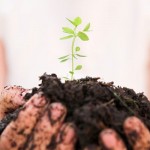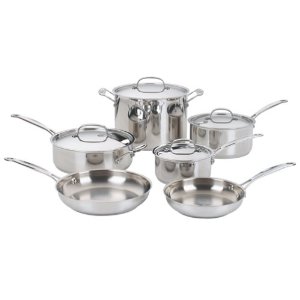GNOWFGLINS eCourse Review 2: Fundamentals I, The GNOWFGLINS Foundation
 This is the second in the GNOWFGLINS ecourse review. I’ll be reviewing each ecourse as I go through it, sharing my thoughts and opinions, and going over how useful each course is.
This is the second in the GNOWFGLINS ecourse review. I’ll be reviewing each ecourse as I go through it, sharing my thoughts and opinions, and going over how useful each course is.
Fundamentals I – Lesson 1:
The GNOWFGLINS Foundation
This lesson discusses the GNOWFGLINS Foundation, including the philosophies behind it. Wardeh presents this lesson with four PDF files (Defining GNOWFGLINS, Why GNOWFGLINS, Beyond Natural and Organic, & Dietary Guidelines,) one video, and two audio files.
This is a short, light lesson, which offers basic principles and information. It’s a good overview of why the methods and foods Wardeh chooses for her family are important, healthy, and environmentally sustainable.
For the non-religious or non-Christian readers, half of this lesson does discuss God and Wardeh’s love of and obedience to Him. However, the two PDF files “Beyond Natural and Organic,” and “Dietary Guidelines,” as well as the second audio file, contain helpful information which is less reliant upon relgion.
The “Defining GNOWFGLINS” video and PDF file go over what each letter in the GNOWFGLINS acronym means in good detail. An example:
“N – Natural. Picture a garden. A diverse population of organisms – big and small, young and old, plant and animal – living together, sharing resources and each contributing to the health of the community. From the richest soil to the tallest tree and all life in between, nothing is neglected. The waste of one serves the needs of another. Without the one, the rest suffer. All for one and one for all. Natural foods thrive in these rich and diverse ecosystems.”
and
“F – Foods. Get real. Real foods are prepared naturally to preserve or enhance their nutritional value. Properly prepared real foods are fun to eat, give sustaining energy, and heal our bodies. Take real yogurt, where raw milk from a pastured animal is cultured with friendly bacteria to make a deliciously satisfying, energy-conferring, and gut-healing food. Real foods do not cause cravings, headaches, intestinal discomfort, energy swings, addictions or other eating disorders. So eat up — your body will thank you.”
The “Why GNOWFGLINS” PDF includes the religious foundation Wardeh uses to provide healthy foods for her family. An excerpt:
 “Our family embraces this responsibility to subdue the wild places of the world and to rule over its creatures, not as pro?t takers but as faithful stewards. And our example comes from God and the Garden of Eden. Today, we strive to plant our own gardens: protected places of refuge with all the joys and pleasures that this world has to offer — natural habitats for plants and animals, sustainable systems of food production, and shelters integrated with the cycles of the sun, wind and water. GNOWFGLINS is the beginning of this journey. But there is much more to GNOWFGLINS than planting gardens.”
“Our family embraces this responsibility to subdue the wild places of the world and to rule over its creatures, not as pro?t takers but as faithful stewards. And our example comes from God and the Garden of Eden. Today, we strive to plant our own gardens: protected places of refuge with all the joys and pleasures that this world has to offer — natural habitats for plants and animals, sustainable systems of food production, and shelters integrated with the cycles of the sun, wind and water. GNOWFGLINS is the beginning of this journey. But there is much more to GNOWFGLINS than planting gardens.”
The meat of the lesson for the non-Christian readers will be in the last two PDF files, and in the second audio file. In “Beyond Natural and Organic,” Wardeh compares and contrasts USDA Organic-certified products with truly organic. She begins with, “Do you know what “natural” means in the food marketplace? It doesn’t mean much – other than that a processed food is free of “arti?cial” ingredients.” The “Beyond Natural and Organic” audio file seems to be Wardeh reading the text of the PDF, in case folks would rather listen than read.
The “Dietary Guidelines” PDF helps us to understand the fundamentals of nutrition Wardeh will be presenting, as given by the Weston A. Price Foundation. She introduces the guidelines thusly:
“This being lesson 1 of the Fundamentals eCourse, we don’t have anything to cook. I want to give you time to get your ?rst required ingredients and tools ready. But I have more practical advice for you regarding the food marketplace. What we’re going to do next is couple the GNOWFGLINS de?nitions with the Dietary Guidelines from the Weston A. Price Foundation. I will list the dietary guidelines, and insert explanatory comments. Then I’ll tell you what to buy.”
She then lists the guidelines, and each one is followed by her suggestion of what to buy, like this:
 “17. Cook only in stainless steel, cast iron, glass or good quality enamel.
“17. Cook only in stainless steel, cast iron, glass or good quality enamel.
“Other materials, such as tefon, aluminum, and plastic are reactive — heat and acids will leech particles of them into your food. Sadly, recent studies have shown that stainless steel is reactive under certain conditions. Cast iron should not be used with acidic foods that react with the iron. Glass or good quality enamel pans are non-reactive and will not pollute your food.
“What to buy. If you’re shopping for cookware, the best choices are glass or good quality enamel for your cooking pots. Cast-iron and stainless steel are good if not used with acidic foods. However, if you already have stainless steel (like me), running out and buying new cookware is not as imperative as it would be if you were using aluminum, te?on or plastic.”
Finally, Wardeh rounds the lesson out with “Dietary Dangers,” which is also taken from the WAPF, such as “Avoid rancid and improperly prepared seeds, nuts and grains found in granolas, quick rise breads and extruded breakfast cereals, as they block mineral absorption and cause intestinal distress.”
This ecourse is a great introduction for those new to eating whole, healthy foods, and is a good refresher for people who are already conversant with the basics of a healthy diet. It gets everyone on the same page as to why Wardeh will be presenting these foods and methods, and gives important background information. It’s also a good opportunity to start getting to know Wardeh!
 The next lesson is where we’ll start learning and applying her methods: Soaking Whole Grains, Nuts and Seeds. This is where it really starts getting interesting, because we’re doing and learning.
The next lesson is where we’ll start learning and applying her methods: Soaking Whole Grains, Nuts and Seeds. This is where it really starts getting interesting, because we’re doing and learning.
